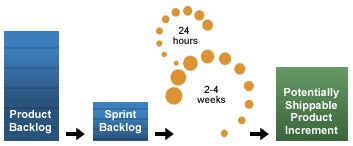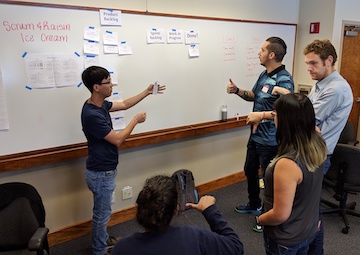 I spend my working days helping companies use scrum and other agile practices to create healthier working environments and increased business value. Today, I found myself reflecting on the path that led here. Below is an abbreviated timeline of events in the evolution of scrum. I’ve included a few bits of my journey with scrum as well.
I spend my working days helping companies use scrum and other agile practices to create healthier working environments and increased business value. Today, I found myself reflecting on the path that led here. Below is an abbreviated timeline of events in the evolution of scrum. I’ve included a few bits of my journey with scrum as well.
An Abridged History Of Scrum
1970
Winston Royce publishes “Managing The Development Of Large Software Systems.” This paper is often cited as the origin of waterfall development. While Royce describes what became known as waterfall, he argues against it in the paper. He actually advocates for a more iterative, two pass approach, instead of the single pass of waterfall.

 The
The  I encounter scrum teams changing, or worse, creating, story estimates during their
I encounter scrum teams changing, or worse, creating, story estimates during their  Sprint planning is the cleverly named event where the scrum team creates their plan for the sprint. The outputs from sprint planning are: the sprint goal, the forecast of which product backlog items will be delivered, and the team’s work plan.
Sprint planning is the cleverly named event where the scrum team creates their plan for the sprint. The outputs from sprint planning are: the sprint goal, the forecast of which product backlog items will be delivered, and the team’s work plan. A client who is basing their scrum adoption on the
A client who is basing their scrum adoption on the 
 To prioritize items in a scrum team’s product backlog, the product owner needs an estimate of both value and cost for each item. This way, they can identify which items have high
To prioritize items in a scrum team’s product backlog, the product owner needs an estimate of both value and cost for each item. This way, they can identify which items have high 
 A scrum team works from a prioritized list called the product backlog. Product backlog items are often called
A scrum team works from a prioritized list called the product backlog. Product backlog items are often called